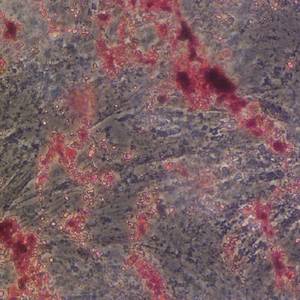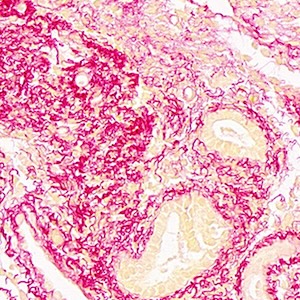Visualizing endocytotic pathways at transmission electron microscopy via diaminobenzidine photo-oxidation by a fluorescent cell-membrane dye

Submitted: 2 September 2014
Accepted: 25 September 2014
Published: 22 October 2014
Accepted: 25 September 2014
Abstract Views: 1991
PDF: 823
Supplementary: 237
HTML: 704
Supplementary: 237
HTML: 704
Publisher's note
All claims expressed in this article are solely those of the authors and do not necessarily represent those of their affiliated organizations, or those of the publisher, the editors and the reviewers. Any product that may be evaluated in this article or claim that may be made by its manufacturer is not guaranteed or endorsed by the publisher.
All claims expressed in this article are solely those of the authors and do not necessarily represent those of their affiliated organizations, or those of the publisher, the editors and the reviewers. Any product that may be evaluated in this article or claim that may be made by its manufacturer is not guaranteed or endorsed by the publisher.
Similar Articles
- M. Malatesta, C. Zancanaro, M. Costanzo, B. Cisterna, C. Pellicciari, Simultaneous ultrastructural analysis of fluorochrome-photoconverted diaminobenzidine and gold immunolabeling in cultured cells , European Journal of Histochemistry: Vol. 57 No. 3 (2013)
- M. Malatesta, M. Giagnacovo, M. Costanzo, B. Conti, I. Genta, R. Dorati, V. Galimberti, M. Biggiogera, C. Zancanaro, Diaminobenzidine photoconversion is a suitable tool for tracking the intracellular location of fluorescently labelled nanoparticles at transmission electron microscopy , European Journal of Histochemistry: Vol. 56 No. 2 (2012)
- M. Costanzo, F. Carton, A. Marengo, G. Berlier, B. Stella, S. Arpicco, M. Malatesta, Fluorescence and electron microscopy to visualize the intracellular fate of nanoparticles for drug delivery , European Journal of Histochemistry: Vol. 60 No. 2 (2016)
- D. Martini, A. Trirè, L. Breschi, A. Mazzoni, G. Teti, M. Falconi, A. Ruggeri Jr, Dentin matrix protein 1 and dentin sialophosphoprotein in human sound and carious teeth: an immunohistochemical and colorimetric assay , European Journal of Histochemistry: Vol. 57 No. 4 (2013)
- M. Scimeca, A. Orlandi, I. Terrenato, S. Bischetti, E. Bonanno, Assessment of metal contaminants in non-small cell lung cancer by EDX microanalysis , European Journal of Histochemistry: Vol. 58 No. 3 (2014)
- M. Miko, L. Danisovic, A. Majidi, I. Varga, Ultrastructural analysis of different human mesenchymal stem cells after in vitro expansion: a technical review , European Journal of Histochemistry: Vol. 59 No. 4 (2015)
- Manuela Malatesta, Transmission electron microscopy for nanomedicine: novel applications for long-established techniques , European Journal of Histochemistry: Vol. 60 No. 4 (2016)
- Simona Polakovičová, Mária Csӧbӧnyeiová, Barbora Filova, Miroslav Borovský, Ladislav Maršík, Alena Kvasilová, Štefan Polák, Merkel-like cell distribution in the epithelium of the human vagina. An immunohistochemical and TEM study , European Journal of Histochemistry: Vol. 62 No. 1 (2018)
- Manuel Scimeca, Simone Bischetti, Harpreet Kaur Lamsira, Rita Bonfiglio, Elena Bonanno, Energy Dispersive X-ray (EDX) microanalysis: A powerful tool in biomedical research and diagnosis , European Journal of Histochemistry: Vol. 62 No. 1 (2018)
- M. Giagnacovo, R. Cardani, G. Meola, C. Pellicciari, M. Malatesta, Routinely frozen biopsies of human skeletal muscle are suitable for morphological and immunocytochemical analyses at transmission electron microscopy , European Journal of Histochemistry: Vol. 54 No. 3 (2010)
You may also start an advanced similarity search for this article.

 https://doi.org/10.4081/ejh.2014.2449
https://doi.org/10.4081/ejh.2014.2449















